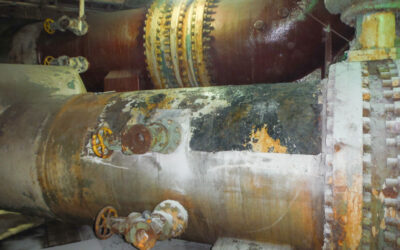Maintaining asset operations to ensure the system runs smoothly and effectively is imperative to the success of any industrial company. Enhancing the life-cycle value of such assets enables companies to save thousands of dollars by eliminating the need for costly, untimely repairs. Life-cycle value focuses on the time involved, cost per investment, maintenance costs, and reliability costs. As the costs rise and outweigh the benefits of a repair, the associated life-cycle value and effectiveness decrease significantly. The longevity of an asset’s value is driven by one’s ability to engineer a system, knowing the functionality of that system will work for all associated components reliably for the longest possible extent of time.
In order to establish longevity and improve an industrial asset’s life-cycle value, operators must understand which areas of their plant, facility, or individual asset are most at risk of failure. This point is where A&G Industrial Services’ managed area program (MAP) can determine the root cause of areas at risk, define failure populations, and identify repair methodologies to manage critical points before they fail. The MAP process relies on in-depth data analysis and advanced inspection techniques to accurately identify and rank the severity of areas at risk within a company’s system. This process provides insightful information on which areas of their system are most at risk, needing immediate attention alongside funding and proper maintenance to prevent failures. Without the utilization of a MAP, companies are not only at risk of faulty operations but are more likely to inefficiently allocate time, resources, labor, and funds to assets not of critical importance.
Operators often seek long-term maintenance-free solutions that will not be resource intensive, not require excessive maintenance, or need to be revisited at all. Our process utilizes careful inspection and a MAP to offer the highest certainty of outcome, reducing risks and eliminating the need for recurring maintenance. Most operators have numerous assets, serving different functions operating in different areas, making it challenging to understand which components are important to examine and potentially repair. The MAP process helps provide clarity to this common occurrence.
The MAP Process

First, an inspection is conducted to analyze the system, identifying which areas of the system, whether it be a pipe, tank, or cooling system, are the most critical areas requiring immediate assessment. Following the inspection and analysis, the MAP identifies which areas are at the highest risk of failure, requiring the operator to devote key funds to the critical components. Facilities and plants have a limited budget for maintenance and repairs, so in situations such as an unprecedented outage, these funds and resources need to be allocated timely and efficiently to the most critical pieces of equipment. After these areas have been assessed and repaired, we reinspect the system to provide comparison data across assets and time. This data produces corrosion rates, thus allowing results to be compared to previous years’ inspection reports. This step is essential to offering companies with updated information on their asset’s well-being, enabling us to create a timeline that predicts which assets are the next areas to critically assess. The MAP provides proactive solutions to establish budgets and timelines that meet company goals and objectives.
Benefits of MAP Utilization
➤ Maintenance-Free Solutions
➤ Improved Life-Cycle Value/Asset Longevity
➤ Increased Cost Savings
➤ Operations at the Highest Certainty of Outcome
➤ Enhanced Reliability
The Key to Asset Longevity
The key to longevity lies in the MAP’s ability to define critical and non-critical components. By offering operators insight into which areas of their system are critical, requiring immediate maintenance and repair, while simultaneously shedding light on an often overlooked aspect, the non-critical assets. Non-critical assets are just as important to note as critical assets. While it is important to prevent failures in real-time, it is equally important to understand which assets are working properly and do not need to be maintained. By not pouring in unnecessary funds for inspection, maintenance, and repair of non-critical, optimally operating assets, those imperative resources can be saved for when it truly counts. After all, if it is not broken, there is no need to fix it.
Comprehensively understanding both critical and non-critical assets via a MAP extends life-cycle value dramatically. This enables companies to properly allocate resources to the areas most at-risk of failure while continuing to produce reliable results through non-critical, fully-operational assets.
MAPs can also be customized, featuring system vulnerability analyses, potential failure identification, and proven engineered replacement options (e.g., durations, installation costs), improving the overall worth of an asset.
Keyways to Improve Your Assets Life-Cycle Value
➤ Managed Area Programs (MAP)
➤ Regular Inspections
➤ Cost-Benefit Analysis
➤ Data-Driven Decision-Making
For industrial services across industries, it is a best practice to focus on improving asset longevity through meticulous strategies such as the managed area program, to produce high-quality results and long-term success. By inspecting systems and identifying the most critical areas, properly allocating resources, and regularly monitoring all systems, companies can ensure their operations run seamlessly for the lifetime of their company.

